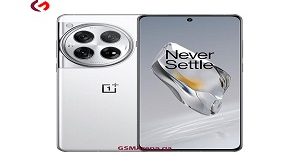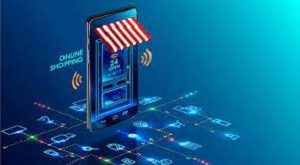Introduction:
In the retail industry, where things move quickly, innovation has become essential to success. Savvy Retail Innovations, a conjunction of computerized headways and retail systems, are reshaping the manner in which customers shop and organizations work. This article delves into the diverse applications, advantages, and challenges of Smart Retail Technologies, as well as the transformative effect they have on the retail experience.
I. The Advancement of Brilliant Retail Innovations:
A. Meaning and Application:
Brilliant Retail Innovations include a scope of computerized arrangements intended to upgrade the shopping experience, smooth out tasks, and enhance client commitment. From computer based intelligence driven examination to vivid in-store encounters, these advancements mark a change in perspective in the retail scene.
B. Joining of IoT (Web of Things):
At the core of savvy retail is the Web of Things (IoT), associating actual gadgets and frameworks to assemble and trade information. IoT empowers retailers to make a consistent, interconnected climate where information driven bits of knowledge drive direction.
C. Data Analytics’s Rise:
In the retail industry, the power of data cannot be overstated. Progressed examination, controlled by AI calculations, empower retailers to gather important bits of knowledge into shopper conduct, inclinations, and market patterns. This information driven approach frames the underpinning of many shrewd retail procedures.
II. Technologies for Smart Retail Use:
A. Experiences with Personalized Shopping:
Smart Retail Technologies make it possible for retailers to create individualized customer experiences. Through information investigation, retailers can figure out individual inclinations, buy chronicles, and socioeconomics, fitting suggestions and advancements to every client.
B. Virtual Reality (VR) and augmented reality (AR):
The traditional shopping experience is being transformed by AR and VR technologies. Virtual attempt ons, vivid in-store encounters, and intelligent item shows reclassify how purchasers collaborate with items, both in actual stores and on the web.
C. Insightful Retail location (POS) Frameworks:
Current POS frameworks are at this point not simply conditional devices. Integrating inventory management, customer relationship management (CRM), and analytics, they are intelligence hubs. Clever POS frameworks smooth out activities, decrease blunders, and give ongoing information to informed direction.
D. RFID-enabled inventory management:
Smart inventory management relies heavily on the technology known as RFID (Radio-Frequency Identification). Retailers can follow stock continuously, robotize restocking processes, and lessen occurrences of stockouts or overloading, streamlining inventory network effectiveness.
III. The Advantages of Using Smart Retail Technology:
A. Increased Engagement with Customers:
The capacity to further engage customers is one of smart retail’s primary benefits. A sense of connection and loyalty are cultivated through personalized recommendations, interactive displays, and loyalty programs tailored to each customer’s preferences.
B. Efficiency in the Workplace:
Shrewd Retail Advancements smooth out different functional perspectives, from stock administration to client assistance. Real-time data analytics enable retailers to quickly make informed decisions and reduce manual errors.
C. Integration of omnichannels:
A key component of well-thought-out retail strategies is omnichannel retailing, which facilitates a streamlined shopping experience across online and offline channels. Clients can progress easily between actual stores, sites, and versatile applications, with a reliable involvement with each touchpoint.
D. Information Driven Direction:
The abundance of information produced by shrewd retail advancements furnishes retailers with significant experiences. By understanding client conduct, market patterns, and stock elements, retailers can pursue vital choices that drive development and adjust to changing buyer inclinations.
IV. Challenges in Executing Brilliant Retail Advances:
A. Security and privacy concerns:
Concerns about data security and privacy are raised by the extensive collection of consumer data. To ensure customer trust and compliance, retailers must implement robust cybersecurity measures and adhere to stringent privacy regulations.
B. Tough integration and high initial costs:
The implementation of smart retail technologies frequently necessitates substantial initial investments. It can be difficult to seamlessly integrate these technologies into existing systems, requiring careful planning and expertise.
C. Adaptation of the Workforce:
A workforce capable of navigating and utilizing new technologies is required for the transition to a smart retail environment. To ensure that employees are able to use these tools efficiently, retailers need to make investments in training programs.
V. Success Stories and Case Studies:
A. Go Amazon:
The grocery store without a cashier called Amazon Go is an example of how smart retail technologies are integrated. Amazon Go provides a frictionless shopping experience where customers can simply grab items and walk out. It does this by utilizing a combination of computer vision, sensors, and machine learning.
B. Alibaba’s Hema General stores:
Alibaba’s Hema stores mix on the web and disconnected shopping consistently. Clients utilize a portable application to peruse items, make buys, and even have new fish cooked nearby. The convenience and overall shopping experience are both enhanced by the integration of technology.
VI. Future Patterns and Developments:
A. Simulated intelligence Fueled Chatbots and Menial helpers:
The coordination of simulated intelligence fueled chatbots and remote helpers is ready to upgrade client support in retail. Customers can get immediate assistance, get answers to questions, and be guided through their shopping experience by these intelligent systems.
B. 5G Innovation and Edge Figuring:
The speed and connectivity of smart retail systems are expected to undergo a paradigm shift as a result of the implementation of 5G technology and edge computing. Quicker information transmission and low-idleness handling will additionally improve the effectiveness of shrewd retail applications.
C. Eco-friendly Retail Technology:
The retail sector is increasingly placing an emphasis on sustainability. Through effective management of the supply chain, the reduction of waste, and store designs that are friendly to the environment, smart technologies can help with efforts to promote sustainability.
VII. Conclusion:
In the steadily developing scene of retail, Shrewd Retail Advancements stand as a guide of advancement and change. These technologies have an impact on everything from data-driven decision making to personalized shopping experiences.


